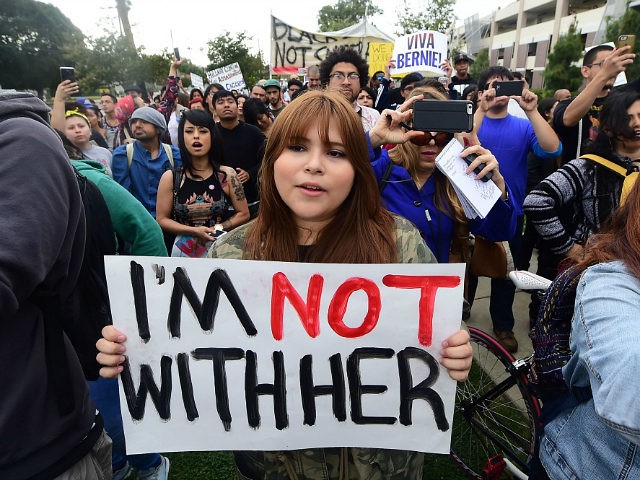 “I am not a member of any organized political party,” Will Rogers said ages ago. “I am a Democrat.”
“I am not a member of any organized political party,” Will Rogers said ages ago. “I am a Democrat.”
So frustration with America’s officially-licensed nominally liberal political party is not new. Even for them, though, I can’t imagine that any party ever worked as hard to pull defeat from the jaws of victory as the Dems are doing now.
Democrats ought to be poised for great things. True, they recently suffered a shattering rout. But eight months feels like a million years ago. Trump’s disapproval rating is a whopping 64%. That’s Nixon During Watergate level — and it includes a third of Republicans, who say the president has no respect for democratic institutions. (What are the other two-thirds thinking?)
After a mere five months in office, impeachment is a realistic possibility.
And OMG the non-Trump Republicans — they’re stuck! Tax cuts for the rich and infrastructure bills are dead letters. They can’t repeal Obamacare — not their “mean,” benefits-slashing way — without pissing off the vast majority of the country. And they can’t not repeal it without pissing off the GOP’s hard-right base. “I don’t know that we could pass a Mother’s Day resolution right now,” Matt Gaetz (R-FL) said in March. They’re even more screwed now, reduced to trying to pass their secret repeal bill in the dead of night so no one notices.
Oh, to be a Democrat in an age of GOP political suicide! Except for one big problem: they’re in even more trouble than the Republicans.
Many Dems think they’re headed to a big win in 2018, dreaming of taking back both houses of Congress. After four years of Trump (or four years of Trump, impeachment, then Pence), a grateful nation will turn to the Democrats — right?
I wouldn’t bet on it.
Pundits are so focused on the civil war tearing apart the GOP that they’re missing the even wider schism within the Democratic Party. Despite leading the party to defeat, the centrist-Third Way-DLC-Hillary Clinton wing of the party still runs the DNC and the state apparatuses. They’ve never made nice with Bernie Sanders or his leftist-progressives — the party’s base and its most committed ideologues — after repeatedly insulting and marginalizing them during the campaign. To the contrary, they’re still at it.
The Clintonites blame the Sandernistas for not voting and giving us Trump; the Berners ask, what part of “we’re not just falling in line for another corporate Democrat anymore” do you not understand? (I still can’t get over the fact that Hillary sought endorsements from war criminals Henry Kissinger and Condi Rice.)
You’ve been there with a spouse or a former friend: the two factions don’t speak the same language. Cynical incrementalism versus ambitious idealism don’t mix. So, as Democrats have tried to process 2016, talking (i.e., blaming) has only made things worse.
Certainly, Democrats may pick up seats next fall. But they certainly shouldn’t feel cocky about 2020.
Even if Trump is removed from office in disgrace, my first-Pence-then-Ryan scenario would leave the Republicans with a more united party and a standardbearer (Ryan) whose relatively sane demeanor will be less likely to motivate Democratic voters to the polls to vote against him.
Which leaves the question of who Democratic voters would be asked to vote for.
The answers are not promising.
The current frontrunner is New Jersey Senator Cory Booker. Once a promising charismatic upstart in the Obama vein, however, he has followed the golden footsteps of Hillary Clinton by selling out to the big Wall Street banks. Occupy Wall Street is dead but its death-to-the-banks spirit lives on among the Bernie Sanders faction of the party. As Hillary learned, Democrats can win nominations without the Bernie folks, but not general elections.
Virginia governor Terry McAuliffe, a center-right operator best known as the Clintons’ personal real estate guarantor, is gearing up a proto-campaign. He has a certain charisma. But consider how The Politico describes his elevator pitch: “a popular swing-state governor with a record to run on, a business background, and more connections to donors than any first-time presidential candidate ever.” Sounds like a winner…in 1992.
True, progressive stalwart Elizabeth Warren is flirting with a run — but this political animal predicts she won’t pull the trigger. So is Bernie Sanders. But he’ll be 79 in 2020. He’s energetic, but still — odds are, he’ll stay in the Senate.
Things can and will change. At this writing, though, there is no presidential prospect left enough for the Berners to get excited about and right enough for the party leadership to allow.
You can bet the Republicans will benefit from that vacuum.
(Ted Rall (Twitter: @tedrall) is author of “Trump: A Graphic Biography,” an examination of the life of the Republican presidential nominee in comics form. You can support Ted’s hard-hitting political cartoons and columns and see his work first by sponsoring his work on Patreon.)


